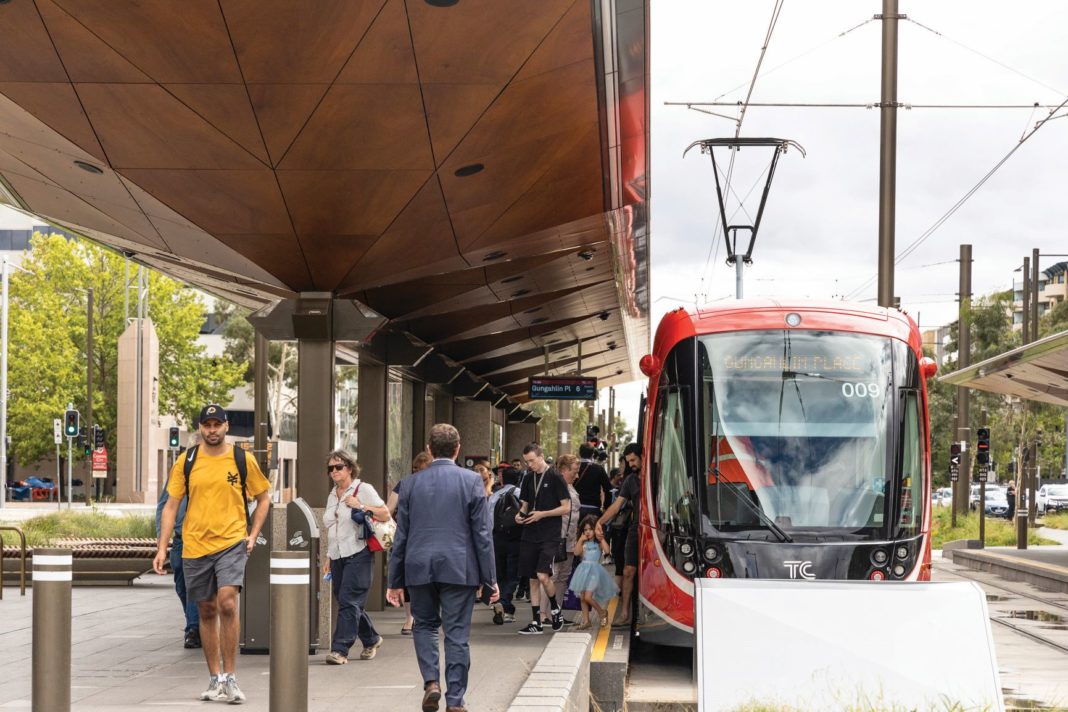Land values within the light rail corridor have increased substantially since 2011, reveals a report from the ACT Government released yesterday, Thursday 7 May.
The light rail benefits realisation report shows the unimproved land value for blocks within the corridor increased by 35.2% between 2011 and 2018, compared to a Territory average of 21.7%.
Property values have also jumped, with average house prices increasing 39% in the Inner North and 27% in Gungahlin from 2014-2018, compared to 17% for the whole of the ACT.
Population growth has exceeded initial expectations, too, with census data showing growth in suburbs along the corridor exceed business case figures by almost 2,500 people – supported by residential development and re-development along the corridor. Notably, 1,288 public housing residences have been replaced, with tenants relocated to newer homes elsewhere across the ACT.
The Government has also outlined the ‘lessons learnt’ from the first year of operation and the construction phase. The report looked at feedback from local businesses about the effects of light rail, both during construction and operation, and will be used to inform the Government’s approach to stage two of the project.
“There are lessons to be learnt from every project, and the lessons from stage one will help better support our local businesses for stage two,” said Transport Minister Chris Steel.
Feedback from businesses included suggestions to reduce multiple road closures and limiting road and lane closures during peak times, limiting the number of simultaneous traffic projects, and making use of traditional ‘shut down’ periods to undertake construction work, such as the Christmas period.
“Construction on major projects can be disruptive but we will be enhancing our communication with those affected by future projects and will better advising them about construction schedules and plans,” Mr Steel said.
He said many Gungahlin-based businesses have cited an increase in revenue, footfall or improved access for patrons since light rail operations began.
While light rail patronage figures have exceeded expectations since services began in April last year, Transport Canberra data shows a sharp decline in daily boardings from March this year due to COVID-19.



